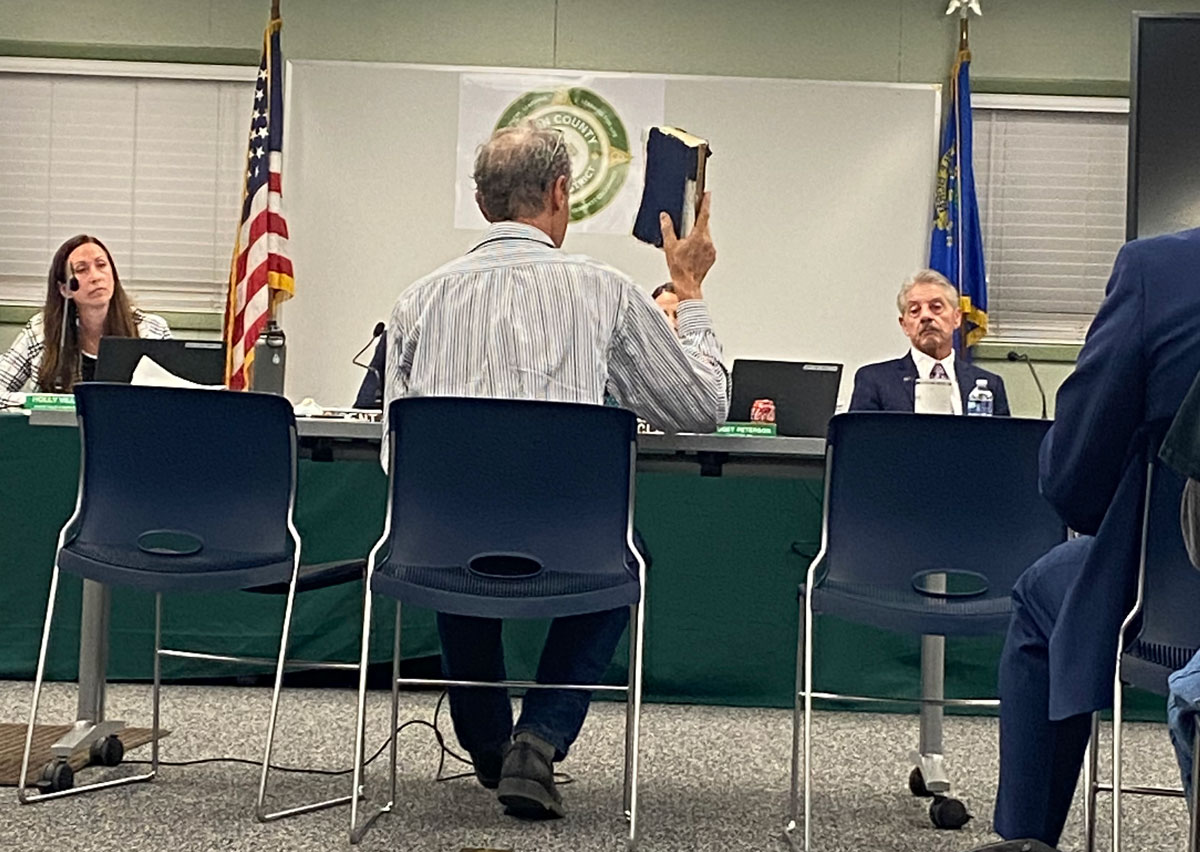
Desert Horned Lizard
The Desert Horned Lizard is a small, round lizard found throughout the West. They are well camouflaged in their surroundings, and body color can be beige, tan, brown, slightly reddish to match the rocky soils found in the desert. They are very flat-bodied with rough looking horns and bumps on their body.

Desert Spiny Lizard
An adult male desert spiny lizard usually have conspicuous blue/violet patches on the belly and throat, and a green/blue color on their tails and sides. Females and juveniles have large combined dark spots on their back and belly areas, and the blue/violet and green/blue coloring is absent.

Great Basin Collared Lizard
The Great Basin Collared Lizard is a medium-sized lizard that is easily identified by the black rings around its neck. These two black collars surround a lighter collar at the base of the neck. The rest of the body is olive-brown to gray with many lighter spots along the back. The spots continue down the back and onto the tail, where they form a reticulated pattern. The belly is usually white or lighter colored than the rest of the body.

Long-Nosed Leopard Lizard
The Long-nosed Leopard Lizard is a moderate-sized lizard with a tail more than twice the length of the rest of the body. It has a relatively large head and small scales across the entire body. The body color is often white, gray, or cream, with darker spots on the back and legs. Their spots can be bright colors depending on the breeding season.

Pygmy Short-Horned Lizard
The Pygmy Short-Horned Lizard is a small lizard with a round body and tiny legs. Its horns are little more than nubs, and do not protrude far from the skull. Their coloration allows them to blend in well with their surroundings. The body is typically brown or gray, with patches of black, yellow, white, or dark brown across the back and tail.

Shasta Alligator Lizard
The Shasta Alligator Lizard is a medium-sized lizard with short limbs, a long tail, and a slim body. This subspecies can have a variety of color patterns, but is typically brown, olive, or grey with dark patches or irregular crossbands along the body.

Sierra Alligator Lizard
The Sierra Alligator Lizard is similar to the Shasta Alligator Lizard. It is a small lizard with short limbs, a long tail, and a slim body. This subspecies can have a variety of color patterns, but is typically brown, olive, or grey with fewer dark patches than the Shasta Alligator Lizard.

Western Fence Lizard
These lizards are diurnal, and are commonly seen basking on paths, rocks, and fence posts, and other suitable sunny locations. They can change color from light grey or tan to nearly jet black for the purpose of thermoregulation while basking. They also have massive egos, and constantly intimidate me with their macho pushups.

Western Pond Turtle
The Western Pond Turtle has marbling along the body and a dark shell. The shell is wide and flat, perfect for swimming. Males have lighter markings on the chin, while females have darker markings.

Western Whiptail
Long and slender body, small grainy scales on its back, and larger rectangular scales on its belly. The upper side often has light stripes, and the throat can be pinkish or somewhat orange in adults.

Zebra-Tailed Lizard
The Zebra-tailed Lizard is a medium-sized, long-legged lizard. They have a slim, gray to light-brown spotted, body with a distinctive black and white banded tail.



